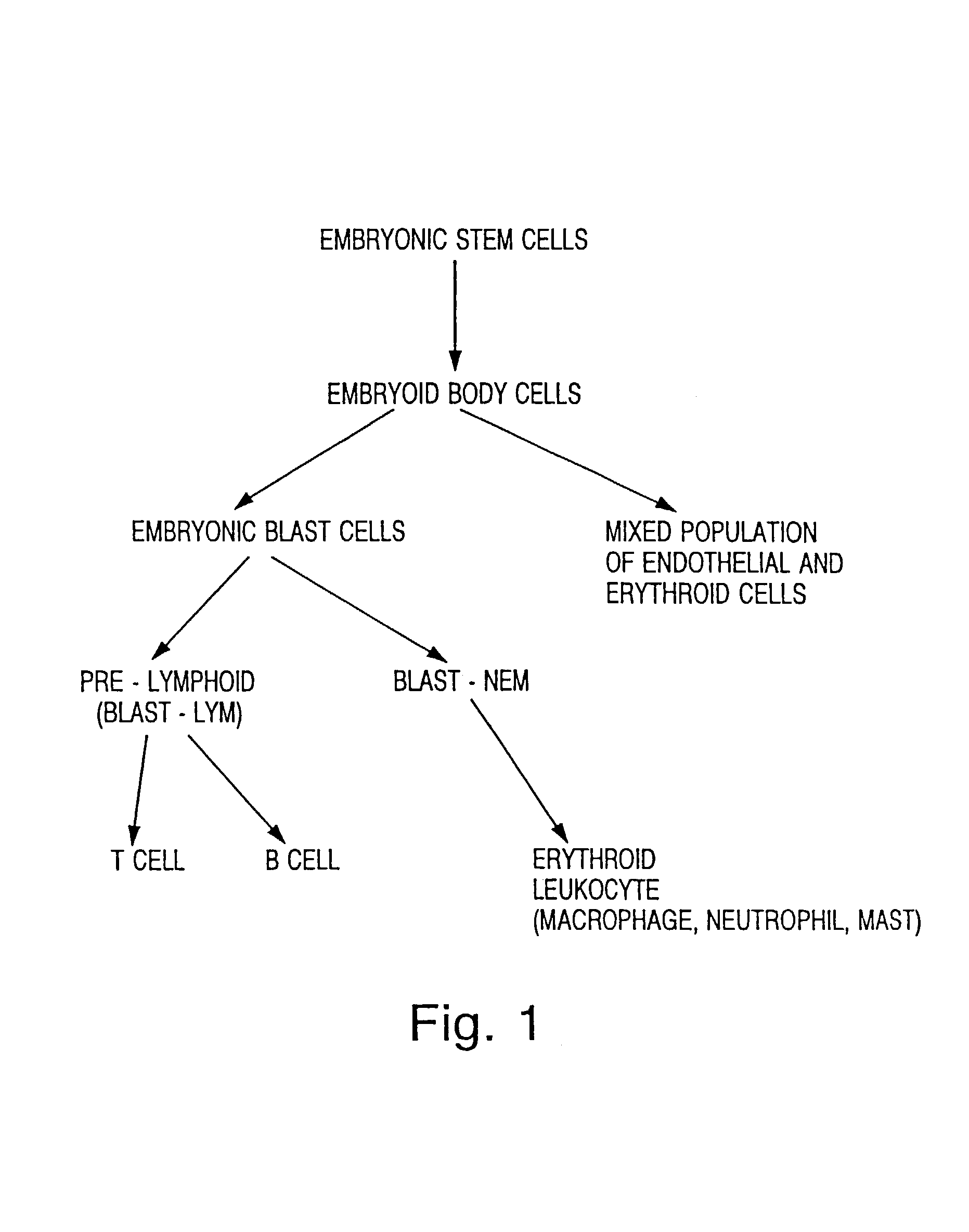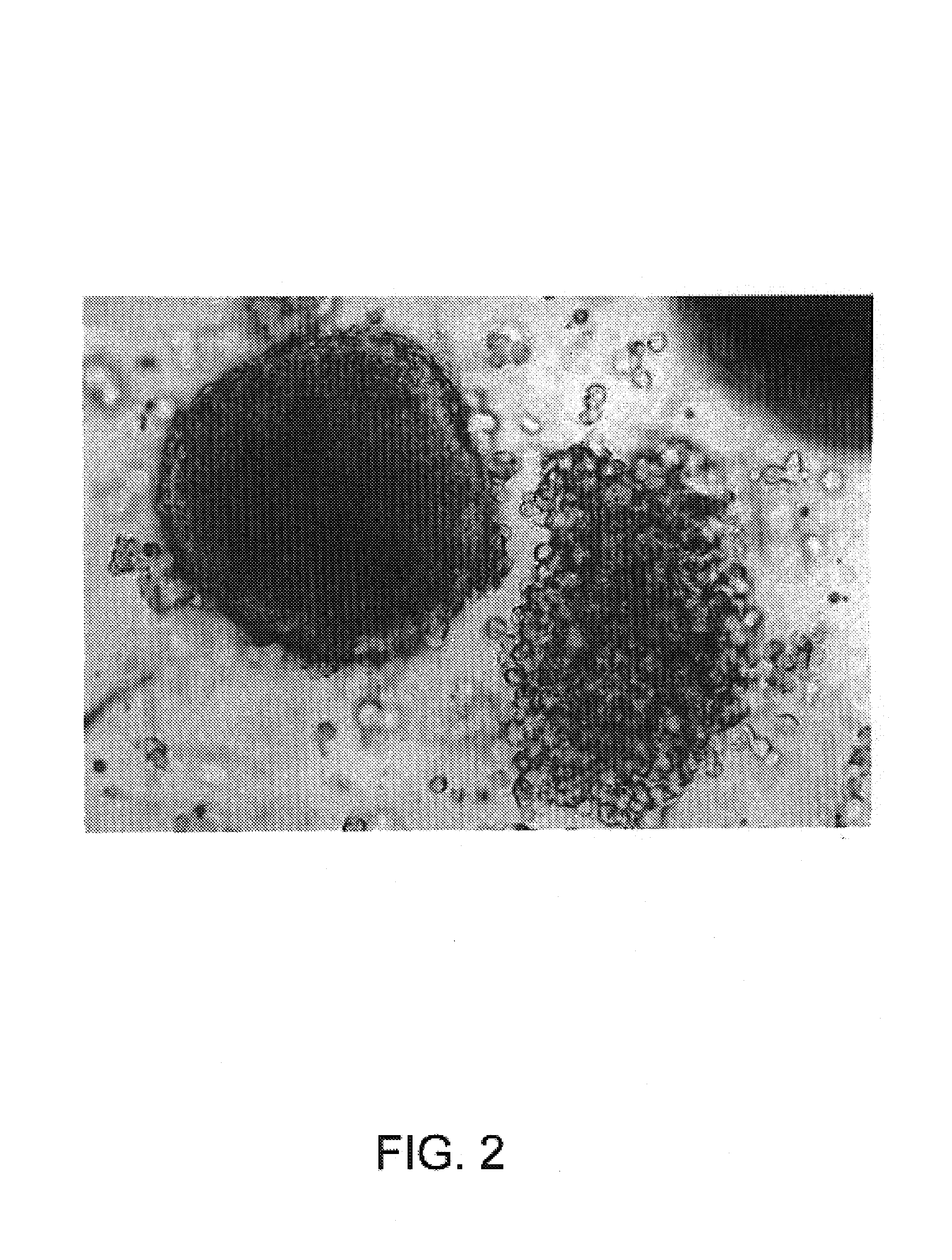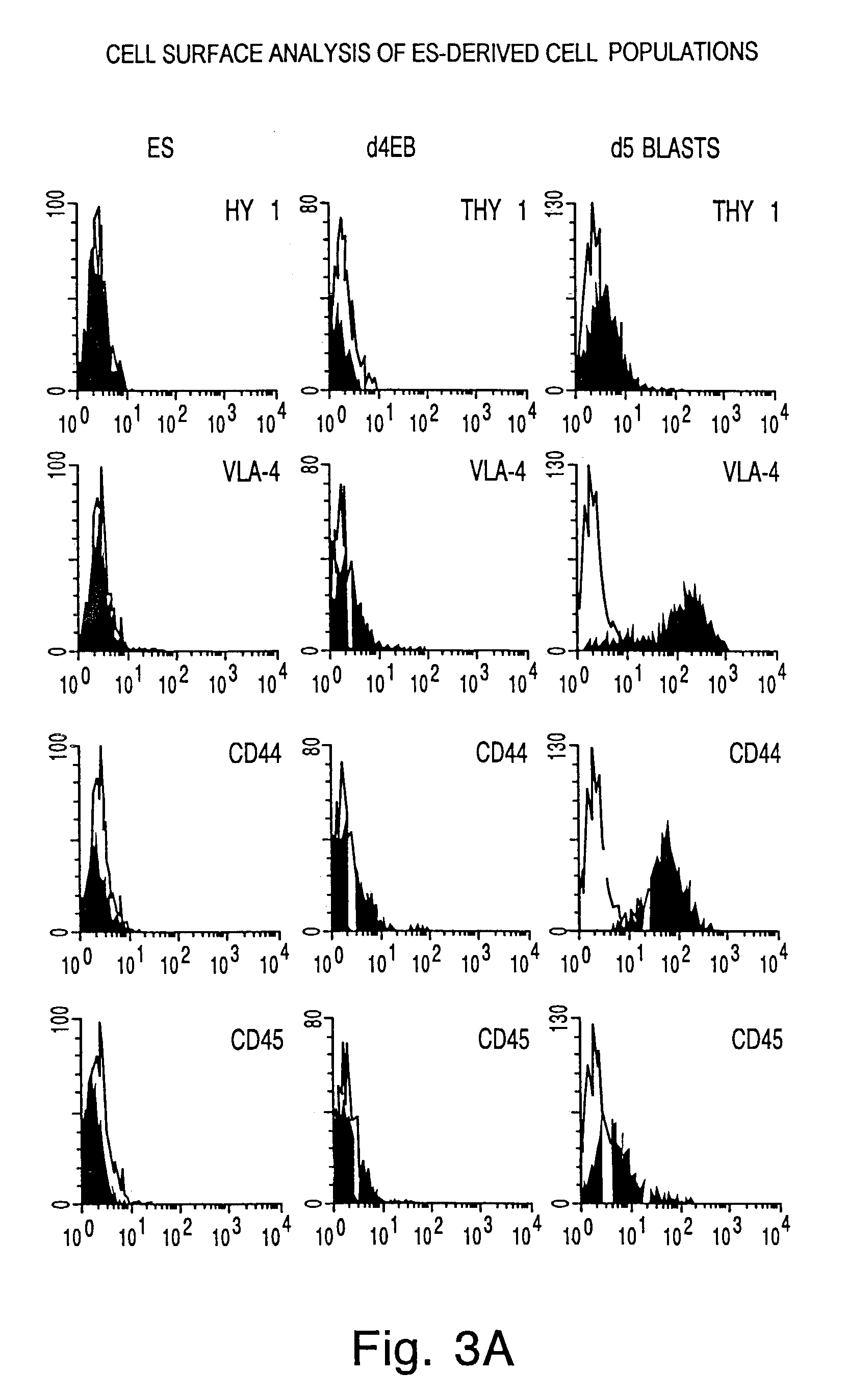Cell populations and methods of production thereof
- Summary
- Abstract
- Description
- Claims
- Application Information
AI Technical Summary
Benefits of technology
Problems solved by technology
Method used
Image
Examples
example 1
[0162]This example describes the production of a population of embryoid body cells from an embryonic stem cell population.
[0163]The CCE ES cell line, originally derived from a 129 / Sv / Ev strain of mouse, were maintained in Dulbecco's modified Eagles medium (DMEM) supplemented with 15% fetal calf serum (FCS), 1.5×10−4 M monothioglycerol (MTG), and Leukemia Inhibitory Factor (LIF). The ES cells were passaged every 2-3 days at a dilution of approximately 1:15. Two days before the initiation of the differentiation cultures, the undifferentiated ES cells were passaged into Iscove's modified Dulbecco's medium (IMDM) supplemented with the above components. To induce differentiation into an EB population of cells, the ES cells were trypsinized, washed, and counted using techniques standard in the art. The freshly dissociated ES cells were then cultured in IMDM containing 15% platelet-derived fetal bovine serum (PDS; obtained from Antech, Tex.; also referred to herein as platelet-poor fetal b...
example 2
[0165]This example describes the labelling of a population of EB cells using antibodies specific for known cell surface molecules.
[0166]EB cells derived from ES cells that had been incubated for about 4 days (Day 4 EB) according to the method described in Example 1 were labelled for fluorescence activated cell sorter analysis using a panel of antibodies against a number of different surface markers. These included antibodies specific for AA4.1, Sca-1, C-kit receptor, H-2b, VLA-4, CD44, CD45 and Thy 1. In addition, a population of CCE ES cells, similar to those cells used to derive the EB cell population, were stained under the same conditions as the EB cell population as a control sample. The results are shown in FIGS. 3A and 3B. Referring to FIGS. 3A and 3B, the Day 4 EB cells (d4 EB) stained with low amounts of anti-Sca-1, anti-C-kit receptor and anti-H-2b antibodies, and essentially no anti-Thy 1, anti-VLA-4, anti-CD44 and anti-CD45 antibodies, thereby indicating low or no expres...
example 3
[0167]This example describes the production of a population of embryonic blast cells from an embryoid body cell population.
[0168]EB cells were generated as described in Example 1. A series of cultures were prepared by plating about 2×105 to about 5×105 EB cells, derived according to the method described in Example 1. The EB cells were cultured in 1% methyl cellulose made in IMDM containing 10% PP-FBS, transferrin (300 μg / ml), glutamine (2 mM), and either a mixture of IL-1 (1000 units / ml), IL-6 (5 ng / ml), IL-11 (25 ng / ml), C-kit ligand (100 ng / ml), or C-kit ligand (100 ng / ml), VEGF (5 ng / ml) and EPO (2 units / ml), or C-kit ligand (100 ng / ml) alone. The EB cells were cultured in a final volume of 1 ml in a 35 mm bacterial grade dishes in a humidified environment of 5% CO2 at 37° C. Individual EB cell cultures were incubated for 3 days, 3.5 days, 4 days and 4.5 days. BLAST cell colonies identified using a Leitz inverted light microscope based on morphology. A representative BLAST cell c...
PUM
 Login to View More
Login to View More Abstract
Description
Claims
Application Information
 Login to View More
Login to View More - R&D
- Intellectual Property
- Life Sciences
- Materials
- Tech Scout
- Unparalleled Data Quality
- Higher Quality Content
- 60% Fewer Hallucinations
Browse by: Latest US Patents, China's latest patents, Technical Efficacy Thesaurus, Application Domain, Technology Topic, Popular Technical Reports.
© 2025 PatSnap. All rights reserved.Legal|Privacy policy|Modern Slavery Act Transparency Statement|Sitemap|About US| Contact US: help@patsnap.com



